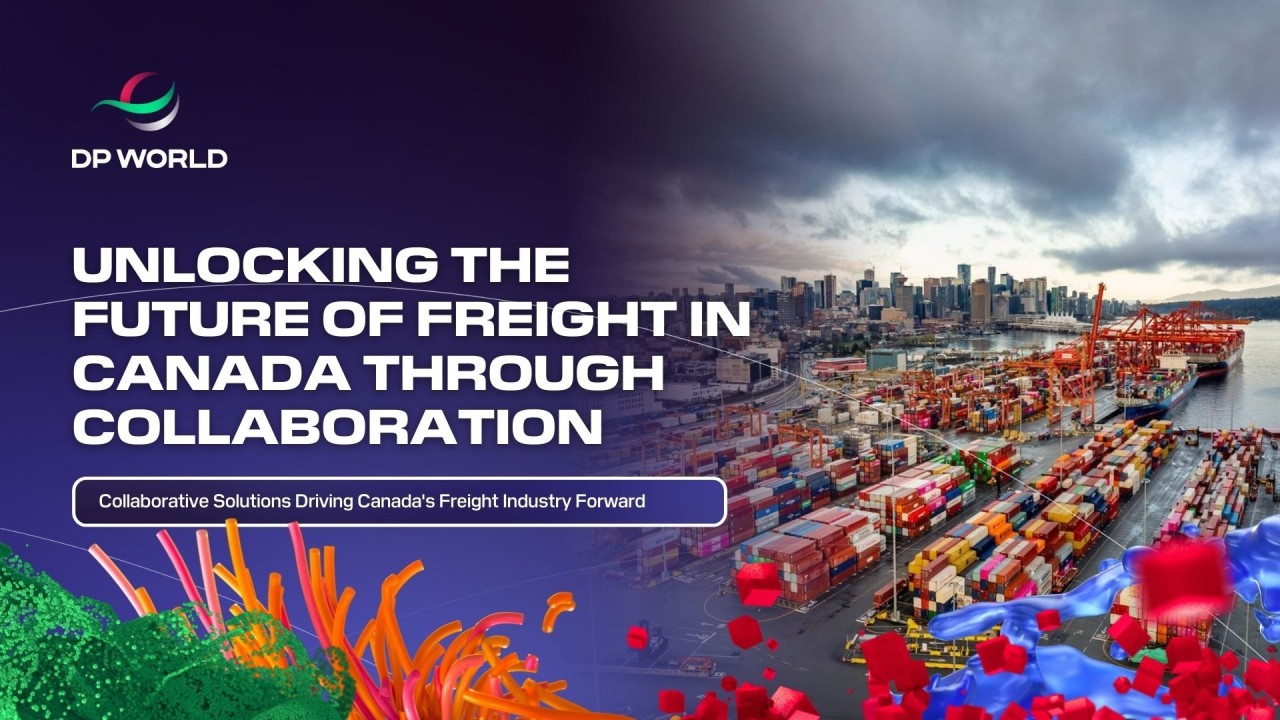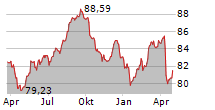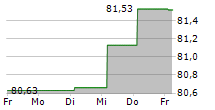
NORTHAMPTON, MA / ACCESS Newswire / April 3, 2025 / DP World:
What does it take to move billions of tons of freight efficiently across one of the largest and most diverse geographies in the world? The short answer- collaboration.

Canada's freight network is a lifeline for its economy, connecting industries, businesses, and consumers across vast landscapes. But logistical challenges such as extreme distances, varied terrains, and unpredictable weather often slow operations, while increasing demand for freight services-driven by e-commerce and international trade-puts even greater pressure on an already complex system.
At a time when freight efficiency is critical, collaboration among railways, ports, last-mile delivery systems, and community stakeholders, including Indigenous groups, isn't just important-it's essential. That's how we break through bottlenecks, meet growing demand, and build a resilient, future-ready freight system.
Canada's Unique Freight Challenges
The Geographical Reality
Canada's sheer size creates logistical hurdles that few other countries face. With supply chains spanning 5,500 kilometers coast-to-coast, the diverse terrain-mountains, plains, and Arctic tundra-coupled with harsh winter conditions can all complicate freight movement. Efficient freight systems here require innovative solutions and partnerships to mitigate these challenges.
Growing Demand Requires Urgency
The surge in e-commerce and globalized trade has caused freight volumes to skyrocket. The Port of Vancouver alone handled over 145 million tons of cargo in 2022, with similar record-breaking figures echoed at Prince Rupert. But here's the catch-we're quickly running up against capacity limits. Faster delivery expectations from customers and businesses add fuel to the fire.
Technology Integration and Sustainability Gaps
New technologies like AI, IoT, and blockchain undoubtedly have the potential to revolutionize logistics by improving efficiency, transparency, and customer experience. But the reality is that successful adoption isn't simply about having the latest tools-it's about ensuring they are the right tools for the challenges at hand. As we've experienced, over-promising and under-delivering on tech can erode trust and have a ripple effect across operations.
Transparency with our customers and teams is key in navigating this. All of these challenges reinforce a clear message to logistics professionals across Canada: Collaboration is the only way forward.
Collaboration as a Solution
Strength in Partnerships Across Nodes
When railways, ports, last-mile delivery systems, and communities work together, the results are game-changing. At DP World, we're demonstrating this at key locations such as the Prince Rupert and Vancouver terminals. By integrating operations and establishing open lines of communication, we're speeding up cargo movement and cutting delays. Collaborative planning ensures cargo swiftly transitions from trains to ships to trucks without bottlenecks.
One shining example is ongoing partnerships with Indigenous communities near Prince Rupert. Working together not only strengthens local economies but also speeds up the development of vital buildouts like intermodal facilities and dedicated rail access-resulting in faster, more efficient freight movement.
Sustainability Must Be Woven Into Collaboration
Sustainability is no longer just an aspiration-it's a necessity for the future of logistics. Transitioning to low-emission vehicles, reducing cargo weight through smarter packaging, and investing in renewable energy aren't optional steps; they are essential to meeting climate commitments. However, these initiatives come with real costs and complexities that we must approach with honesty.
Ports like Prince Rupert are leading the charge by adopting electric-powered cargo handling equipment, setting an example for the industry. But scaling these efforts won't happen in isolation-it requires collaboration, shared investment, and aligned goals across the logistics network. At DP World in Canada, our focus is on being transparent about these challenges while working closely with our partners and customers to build a sustainable future that delivers value for everyone involved.
Addressing Regulatory Alignment
Policy can either ease collaboration-or obstruct it. Proactive regulatory alignment is vital for giving freight operators the flexibility to collaborate across jurisdictions. Policies fostering innovation, funding sustainable infrastructure, and standardizing digital solutions can act as fuel for collaboration.
Driving Forward Together
For Canadian freight to meet tomorrow's challenges, no stakeholder can succeed in isolation. Railways, ports, truckers, policymakers, Indigenous groups, and tech innovators must work as co-creators of a streamlined, sustainable, and innovative network that delivers results now and far into the future.
DP World is committed to this vision and welcomes the voices of logistics and supply chain professionals who share our drive to deliver the goods (literally). Are you seeing barriers to collaboration in your own operations? Or have you implemented technologies or policies that sparked meaningful change?
We'd love to hear your insights and ideas. Join the conversation and share your experiences on our platform.
Together, we can pave the way toward an interconnected, resilient, and sustainable freight network for Canada-and the world.
This article was originally published in LinkedIn. Read the original article.
View additional multimedia and more ESG storytelling from DP World on 3blmedia.com.
Contact Info:
Spokesperson: DP World
Website: https://www.3blmedia.com/profiles/dp-world
Email: info@3blmedia.com
SOURCE: DP World
View the original press release on ACCESS Newswire


